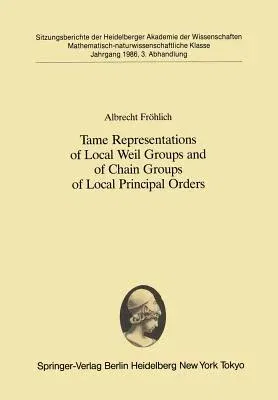Albrecht Fröhlich
(Author)Tame Representations of Local Weil Groups and of Chain Groups of Local Principal Orders (Softcover Reprint of the Original 1st 1986)Paperback - Softcover Reprint of the Original 1st 1986, 13 March 1987

Qty
1
Turbo
Ships in 2 - 3 days
In Stock
Free Delivery
Cash on Delivery
15 Days
Free Returns
Secure Checkout
Part of Series
Sitzungsberichte Der Heidelberger Akademie Der Wissenschafte
Part of Series
Sitzungsber.Heidelberg 86
Print Length
100 pages
Language
English
Publisher
Springer
Date Published
13 Mar 1987
ISBN-10
3540173404
ISBN-13
9783540173403
Description
Product Details
Author:
Book Edition:
Softcover Reprint of the Original 1st 1986
Book Format:
Paperback
Country of Origin:
DE
Date Published:
13 March 1987
Dimensions:
24.41 x
16.99 x
0.56 cm
ISBN-10:
3540173404
ISBN-13:
9783540173403
Language:
English
Location:
Berlin, Heidelberg
Pages:
100
Publisher:
Weight:
176.9 gm

